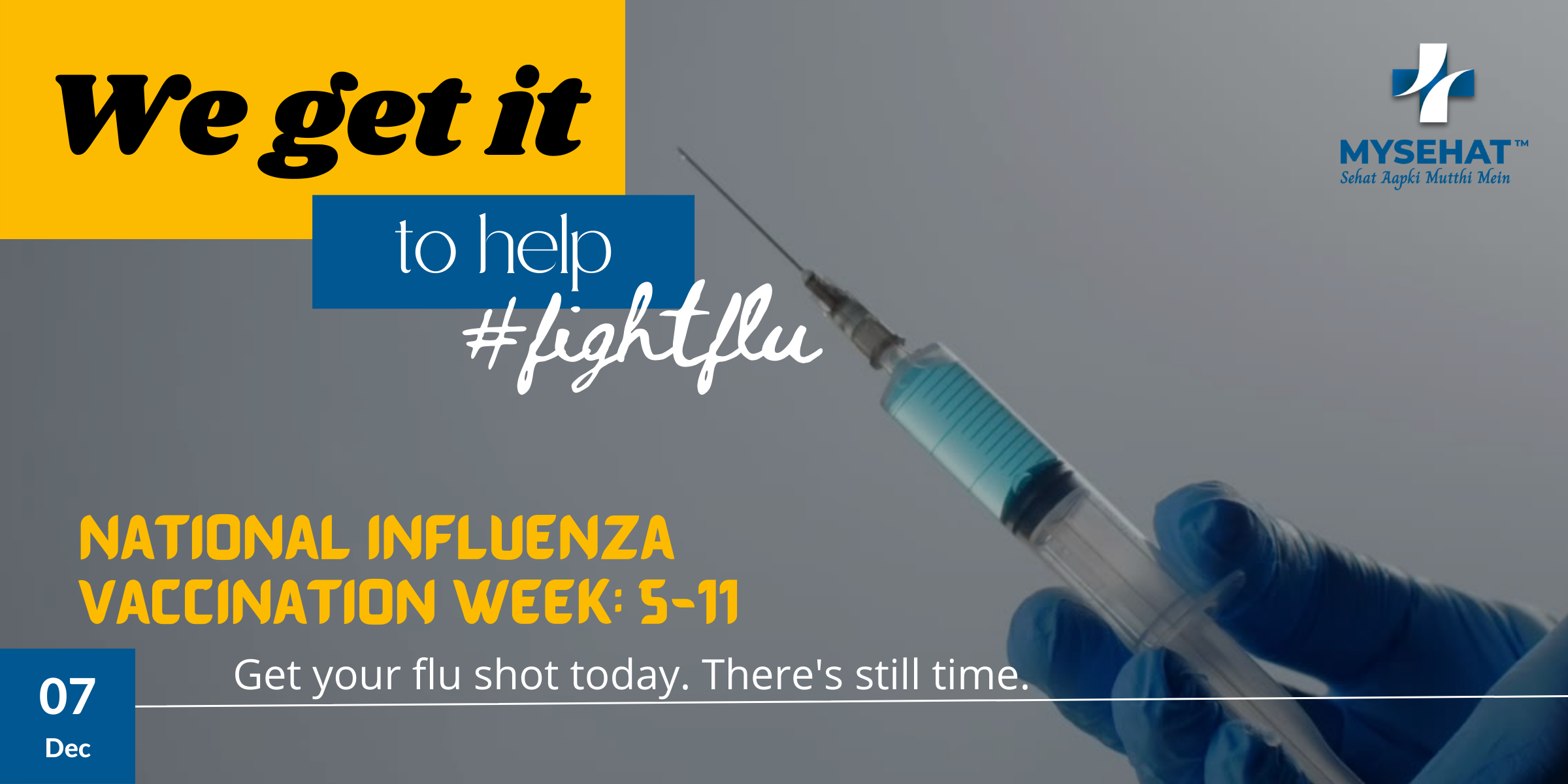National Influenza Vaccination Week (S.N.I.V.), held December 5-11, serves as a sweet reminder to stay protected during the coming winter months. If you haven’t been vaccinated yet, it’s not too late. We encourage you to take your dose as soon as possible. The flu season is quite unpredictable; it can start as early as fall and last until spring.
To prevent such incidents and raise awareness, the Centers for Disease Control and Prevention (C.D.C.) created the N.I.V.W. 2005.
It is a disease caused by a virus that infects the respiratory tract.
- How is the state propagated? – Air transmission.
- How common is the condition? – Very common, more than 1 million cases per year in India.
- Can vaccines prevent disease? – Yes, preventable by vaccine.
- Can the condition be cured? – Medical professionals can treat time to recover. May last for days or weeks. It is caused by an influenza virus infection. In most cases, the flu goes away without treatment. Medications can help relieve symptoms. Bed rest will help you recover faster.
- Does the diagnosis require laboratory analysis or imaging? – Little to no laboratory testing or imaging is required.
SYMPTOMS
The symptoms include Fever, Malaise, Headache, Runny nose, Sneezing, Reduced sense of smell, Metallic taste in the mouth, Chills, Cough, Body pain or muscle pain, Sore throat.

HISTORY OF SPANISH FLU
The Spanish flu, also known as the 1918 flu pandemic, the Spanish flu was one of the deadliest flu epidemics in human history. Caused by the H1 N1 influenza virus, the disease was spreading around the world at the end of World War I.
The first case of influenza was detected in servicemen in Kansas in March 1918. Spanish flu infected nearly a third of the world’s population, in four consecutive waves. It has recorded a high death toll, from 2,550 million worldwide. The high mortality rate among young adults aged 20 to 40 years is a notable feature of the influenza pandemic. Although flu vaccination began in the 1930s, it was not until 1945 that it became widely available to the general population.
One of the main researchers of this vaccine was Dr. Jonas Salk, who is best known for developing the polio vaccine in the 1950s.
The flu can affect anyone, but those most at risk are the elderly (65 years and older), young children, pregnant women, and people with chronic medical conditions. Infected people can pass the infection on to people at high risk for serious illness, including infants younger than 6 months who are too young to get the flu shot. To avoid this contagion, the Advisory Committee of the C.D.C. urges everyone to get vaccinated, including healthy people.
HOW TO OBSERVE INFLUENZA’S NATIONAL WEEK?
- Raise awareness through social media.
- Post a status on your social media platforms to let your loved ones know about the importance of flu shot.
- You can also share your personal story to inspire others and save lives.
- Volunteers in a vaccination campaign. What better way to celebrate Immunization Week than volunteering for a vaccination campaign? Help people sign up for positions, make fun signs directing them to vaccination centers, or reach out to the less fortunate.
- Attend a webinar on immunization promotion It’s always good to be aware of serious issues like the flu shot. CDC. Often hosts webinars to promote Immunization Week and you can be a part of them.

- Side effects – Influenza vaccines have mostly proved to be safe. Common side effects include muscle pain, tiredness, and mild fever among 5–10% of children.
- Time to recover – Flu patients with good immunity normally take about two weeks to recover, but some people might develop serious complications.
- Contagious before symptoms show – The flu is highly contagious even before visible symptoms appear: you must strictly avoid contact with anyone for up to five to seven days after you are diagnosed.
- Beware of allergic reactions – Apart from babies below six months old, the vaccine could be a hazard for people who have acute allergic reactions to it.
- Quite the spreader – Much like the COVID-19 virus, the flu virus can enter your body through your eyes, nose, and mouth.
WHY IS INFLUENZA VACCINATION IMPORTANT?
- Minimizes risk of flu-associated hospitalization – Flu vaccinations reduce the risk of getting admitted to hospitals every year. In 2019 and 2020, vaccination drives prevented an estimated 105,000 hospitalizations.
- Prevents respiratory infections in pregnant people – The vaccine protects pregnant women from contracting lung infections during and after their pregnancy. Studies have also shown that vaccination prevents the baby from getting sick for several months after birth.
- A lifesaver for children – Flu vaccination can significantly reduce the chances of a child dying from the flu.
Treatment
Most of the time flu goes away without treatment. Taking medication can help relieve symptoms.
Bed rest will help in faster recovery.
Self-care is must: Drink plenty of fluids, Take complete rest, Eat healthy foods, Practice good hygiene.






